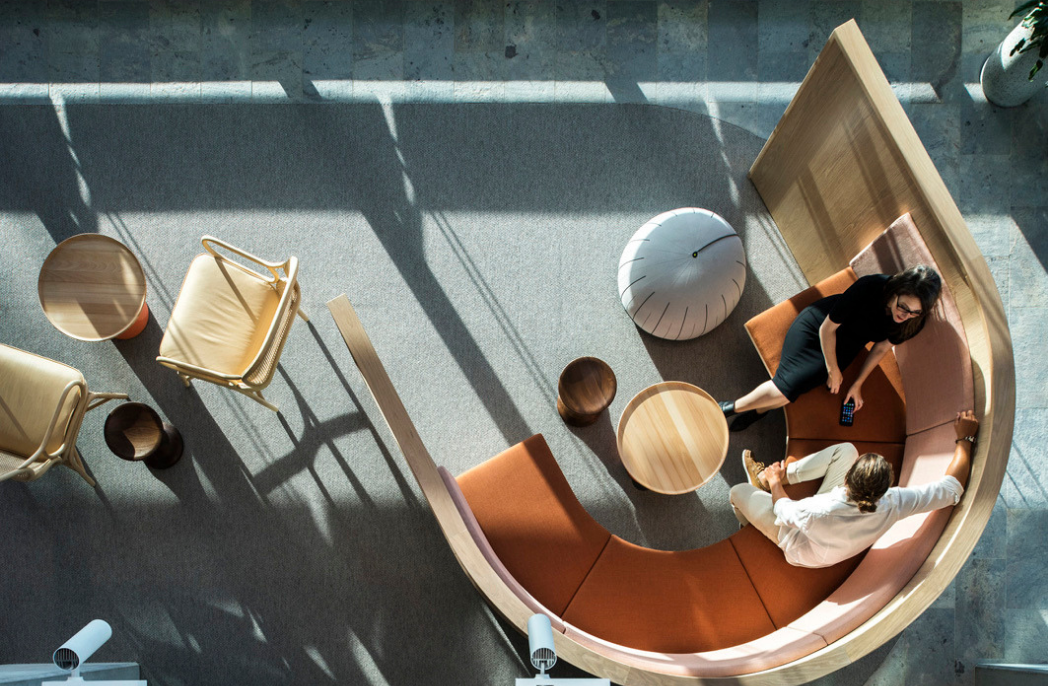
Hybrid work – how are design firms faring in 2024?
Hybrid work – how are design firms faring in 2024?
Share
Australian Design Review (ADR) speaks to people and culture experts in architecture and interior design about industry attitudes towards hybrid work and the strategies that are performing well.
Four years since the pandemic upended traditional notions of where work should be done, Australian legislation is catching up.
Around two million workers might soon have a legal right to flexible work as the Fair Work Commission looks to enshrine this into the awards, just one month after new laws passed giving employees a ‘right to disconnect’ after work hours.
The changes might be a sign that hybrid work is here to stay – but what does this mean for architecture and interior design? And how have studios and employees been negotiating this new world of work so far?
ADR spoke to Seton Walsh-Rose, who was Gray Puksand’s former national people, strategy and culture manager of five years before starting Build Px in 2023, a company that offers services to the property industry like human resources and recruitment. Her day-to-day work now includes listening to interior designers and architects all over Australia and surveying different operations at large, small and micro businesses.
“This is the great thing about working externally, you get a bird’s eye view into what is actually working,” she says.

Walsh-Rose also takes a broader look at approaches in other industries to understand best practices. Her friends who work in government and at superannuation funds, for example, often have a “three-two split” between days in the office and days at home. Although there is some variation across states and territories, she has observed that architecture and interior design studios are generally trailing behind when it comes to hybrid work.
“In this industry, we expect everybody back and the main thing that is said with that is around collaboration and working together,” she says.
For many employed in creative fields or in white-collar jobs that otherwise require teamwork, ‘collaboration’ is often the rallying cry to get people back to the office. The argument goes that authentic collaboration and communication can’t occur when people are not in the same room.
Having started a business with staff employed across Australia and internationally, Walsh-Rose questions this justification. She thinks it might be missing something.
“Changing the way that we work… means leaders changing, and that’s actually the hardest thing that I observed,” she says.
Lagging leadership
Leaders in “most” design studios have mandated returns to the office because this is the way they have always worked, says Walsh-Rose. They have done so without really examining modern ways of working, better uses of technology or reflecting on what works best at the individual level.
Walsh-Rose believes this has widened the intergenerational gap in design firms – but the social contract between employers and employees is also shifting.
“The passion for architecture is only going to go so far, but if the salary distribution versus what their other occupational options are – and the flexibility option reduces and we’re not keeping up with the way things are working – we are going to see a natural talent drain,” she says.
Domino Risch, who led teams at BVN and Hassell for the past 25 years, agrees that many design firms have not “genuinely embraced” modern distributed and asynchronous work. She describes herself as a “recovering workplace designer and strategist”, who is now a freelancer helping organisations transform how, why and where modern knowledge work is done.

“My experience is that there is an acceptance of allowing some location flexibility within a pre-agreed (sometimes inflexible) framework,” she says.
“On top of that, there is a long-standing reluctance to embrace part-time work for people seeking or having meaningful leadership roles, a continuing culture of line-of-sight management (management by walking around) and an over-reliance on serendipitous interactions at the cost of greater intentionality.
“Pair that with an entrenched culture of overwork, chronic stress, under-resourcing and wage theft from expectations of regular work beyond 40 hours a week.”
Risch paints a bleak picture but says she would be surprised if many firms have actually trained their leaders to manage and lead in the world of hybrid work. Both Risch and Walsh-Rose are firm believers that design firms have much to gain from better understanding flexible work.
Pros and cons of hybrid work in design firms
The benefits of working from home are “well documented in countless surveys around the world”, says Risch.
“Many people have gained a much better ability to balance the priorities in their life in ways that suit them,” she explains.
“They have better contact time with their families, they have minimised time commuting, reduced their carbon footprint and feel more trusted and autonomous in being able to choose where works for them. This leads to greater wellbeing, improved mental and physical health and usually a stronger sense of trust between employee and employer.”
Workplace design, strategy and construction company Unispace delved deeper into the global trends in office real estate from both an employee and employer perspective in its Returning for Good report, released in October 2023.
The data found that, while employers thought it was the commute that employees disliked, employees were actually unhappier with the office itself. Thirty-one percent of employees cited their number one office dislike as a lack of privacy they could otherwise access at home. Being more effective in a quiet environment remotely ranked second (27 percent), while feeling more productive at home came third (23 percent).
Meanwhile, the top three workplace ‘likes’ cited by employees were the social interaction in the office (33 percent), opportunity to collaborate (28 percent) and better IT facilities (21 percent).
While Walsh-Rose argues that connection is not necessarily limited by tech used well (i.e. not for back-to-back virtual meetings between staff at home and at work) she concedes that there are some things that simply can’t be achieved online. Early career designers and graduates of architecture in particular learn a lot when they show up to the office.
“You actually need to go in, build a network within your organisation, build a network with other people, and get to know people. You need to know who knows what and ‘how do I get that?’” she says.
“It’s really hard to be a leader if you’ve never seen and you’re not connected with people.”
The best strategies forward
That said, Walsh-Rose has also witnessed the importance of equality of flexibility across the workplace. She points to success stories where clients have arranged work weeks for project teams with three days in the office and two at home.
“My observations are this is 100 percent working because there isn’t a two-set culture. When we’re online, everybody’s online, we’re all equal – exactly what we were in COVID. When we’re in the office, we’re all in the office, we’re all interrelated,” she says.
Walsh-Rose and Risch are both advocates for designing and redesigning weeks to the rhythms of how individuals and teams work best. Having set times or days for focussed work or meetings – factoring in the needs of the business, project and worker – can help things fall into place.
“People’s work habits and work patterns start to change around,” she says.
This can begin with an explicit conversation about how newcomers to projects and teams work best, including when and how they’re most productive. Considering the sensory impact of design studio environments through the lens of neurodiversity is also critical, adds Risch.
“Not everyone wants to be in an active, dynamic space,” she says.
“Not everyone does their best work in the open, feeling like they are on display. Not everyone wants to have headphones in their ears for eight hours a day just to concentrate. Assuming that the physical environment suits everyone equally is a bit short-sighted.”
But much like individuals are nuanced, so are studios. How architects and interior designers achieve the right balance of hybrid work might look different from workplace to workplace, but Risch and Walsh-Rose agree that closer examination and more purposeful steps away from tradition for the sake of it are required from leaders across the industry.
Read Carly Krost’s tips for making the office a place worth leaving home for.
You Might also Like

















